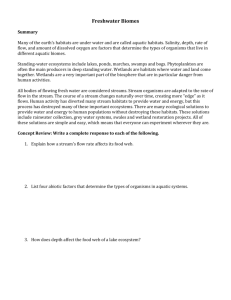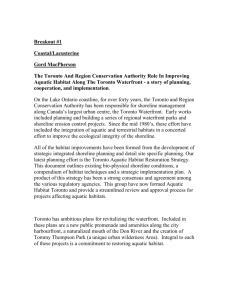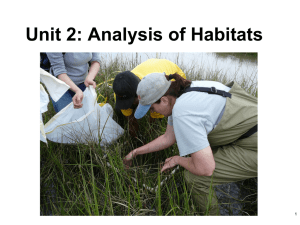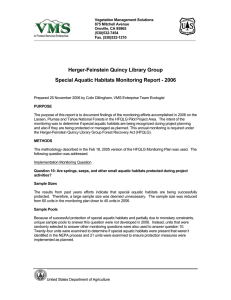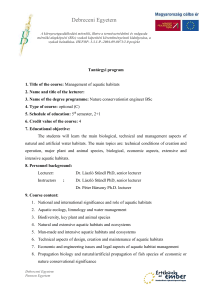aquatic habitats
advertisement
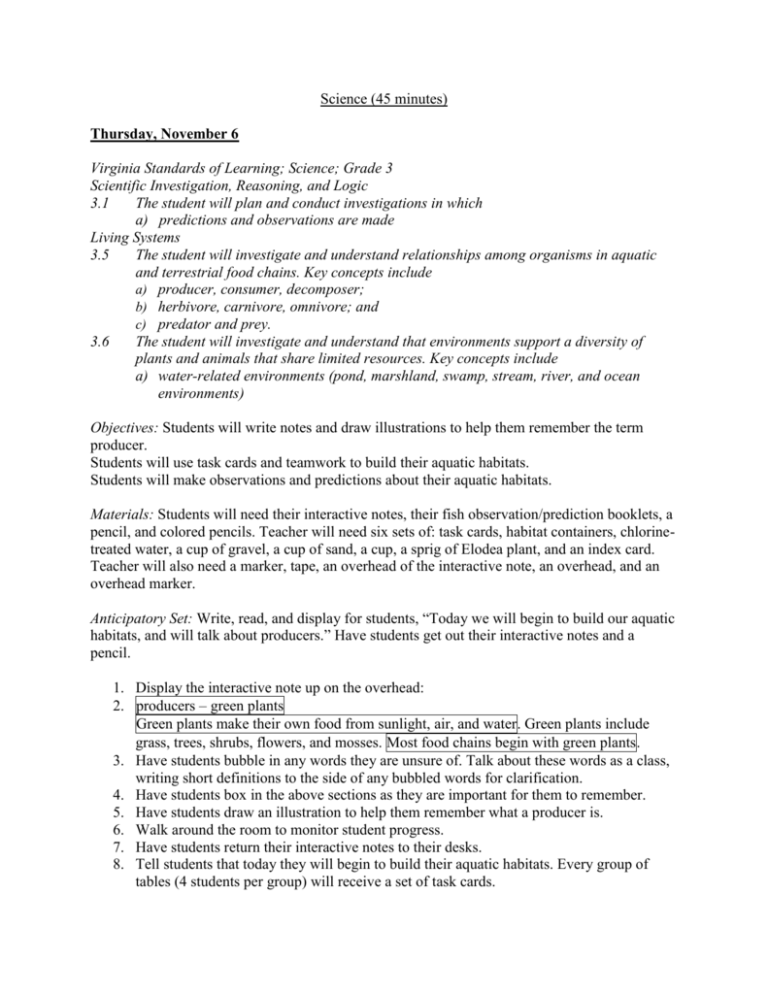
Science (45 minutes) Thursday, November 6 Virginia Standards of Learning; Science; Grade 3 Scientific Investigation, Reasoning, and Logic 3.1 The student will plan and conduct investigations in which a) predictions and observations are made Living Systems 3.5 The student will investigate and understand relationships among organisms in aquatic and terrestrial food chains. Key concepts include a) producer, consumer, decomposer; b) herbivore, carnivore, omnivore; and c) predator and prey. 3.6 The student will investigate and understand that environments support a diversity of plants and animals that share limited resources. Key concepts include a) water-related environments (pond, marshland, swamp, stream, river, and ocean environments) Objectives: Students will write notes and draw illustrations to help them remember the term producer. Students will use task cards and teamwork to build their aquatic habitats. Students will make observations and predictions about their aquatic habitats. Materials: Students will need their interactive notes, their fish observation/prediction booklets, a pencil, and colored pencils. Teacher will need six sets of: task cards, habitat containers, chlorinetreated water, a cup of gravel, a cup of sand, a cup, a sprig of Elodea plant, and an index card. Teacher will also need a marker, tape, an overhead of the interactive note, an overhead, and an overhead marker. Anticipatory Set: Write, read, and display for students, “Today we will begin to build our aquatic habitats, and will talk about producers.” Have students get out their interactive notes and a pencil. 1. Display the interactive note up on the overhead: 2. producers – green plants Green plants make their own food from sunlight, air, and water. Green plants include grass, trees, shrubs, flowers, and mosses. Most food chains begin with green plants. 3. Have students bubble in any words they are unsure of. Talk about these words as a class, writing short definitions to the side of any bubbled words for clarification. 4. Have students box in the above sections as they are important for them to remember. 5. Have students draw an illustration to help them remember what a producer is. 6. Walk around the room to monitor student progress. 7. Have students return their interactive notes to their desks. 8. Tell students that today they will begin to build their aquatic habitats. Every group of tables (4 students per group) will receive a set of task cards. a. Task 1 – Fill the container with water up to the groove b. Task 2 – Get a cup of gravel. Gently spread it over one half of the tank. c. Task 3 – Get a cup of sand. Gently spread it over the other half of the tank, so that the gravel and sand touch but don’t mix very much. d. Task 4 – Get a shelter (a cup). Talk with your team about where they want to put the shelter. Keep the shelter on the bottom by using some gravel or sand to weigh it down. e. Task 5 – Get a sprig (piece) of Elodea plant and float it in the tank. f. Task 6 – Decide as a group what you will name your habitat. Write your team name in pencil on a label. Stick the label on the outside of the tank near the top. 9. Pass out one task card to each student. Give an extra task card to two students at each table who are engaging in good behaviors. 10. Have students complete their task cards. 11. Collect task cards. Have students get out their fish booklets to draw an illustration of their aquatic habitats now, write an observation about the habitat, as well as a prediction for what they think will happen next. Students should label the producer in their habitat. Closure: Have students return their fish booklets to their desks. Tell students that tomorrow they will add something else to their aquatic habitats. Assessment: Student participation in the lesson. Student notes and illustrations in their interactive notes. Student completion of the observation/prediction page in their fish booklets.


